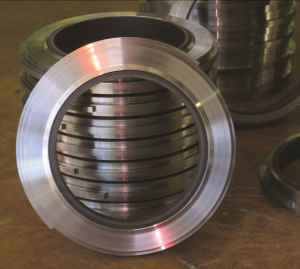Krytox Performance lubricants Characteristics
Chemours Krytox Performance Lubricants Characteristics – Part II
Extreme Temperature Performance
- Krytox oils and greases are the product of choice in extreme temperature conditions. Most petroleum products begin to degrade above 99 °C (210 °F) and are too viscous at temperatures just below –18 °C (0 °F).
- Krytox synthetic lubricants have extreme temperature stability, with operating ranges from below –75 °C up to 350 °C (–103 °F to 662 °F) and temperatures up to 400 °C (752 °F) with appropriate metallurgy. Under the D-3336 test conditions of 177 °C (350 °F) and 10,000 rpm, the majority of competing hydrocarbon lubricants fail in less than 1,000 hr.
- But the general purpose line of Krytox lubricants has been shown to last over 5,000 hr without failure, even at an increased temperature of 200 °C (392 °F). This extreme condition performance is what distinguishes Krytox performance lubricants from other competing products.
Cost Effective of Krytox Performance lubricants
- Krytox lubricants are cost effective across a wide range of applications. Due to their inert nature, Krytox lubricants provide a much longer usable life as compared to typical hydrocarbon oils and greases, and the longer usable life allows them to remain for considerable periods of time before needing to be replaced, if they are replaced at all.
- That translates to savings over time, both by lowering the amount of lubricant purchased and any downtime incurred during relubrication.
Performance Additives of Krytox Performance lubricants
- Anti-corrosion additives are combined with Krytox grease to enhance its ability to protect metallic surfaces from corrosion caused by moisture and oxygen.
- Chemours also offers a patented oil-soluble additive to give the same corrosion protection to our oils.
- Krytox greases containing anti-wear additives have properties that give high specific load-carrying capacity and the highest protection against wear.

